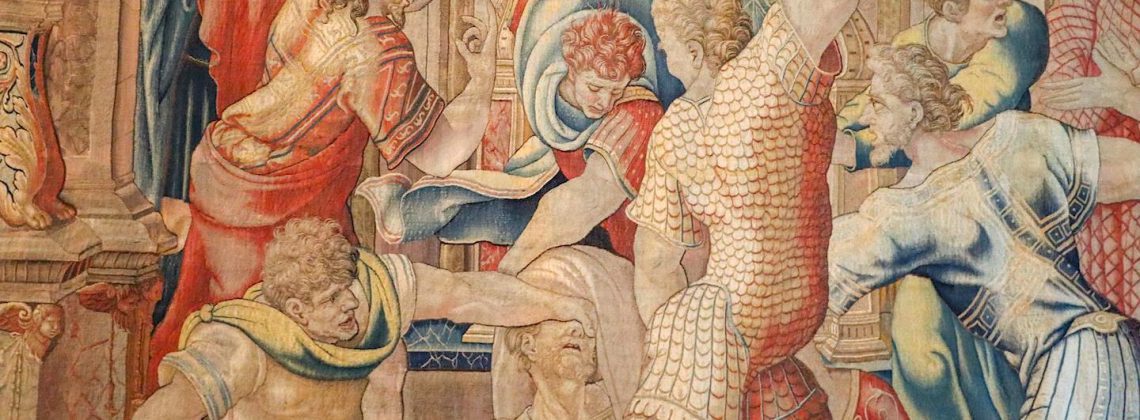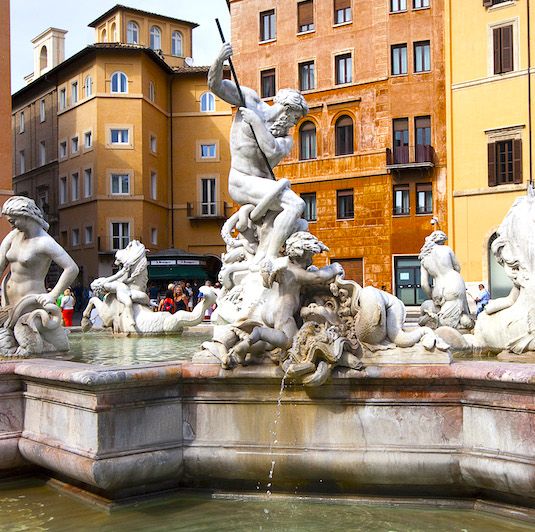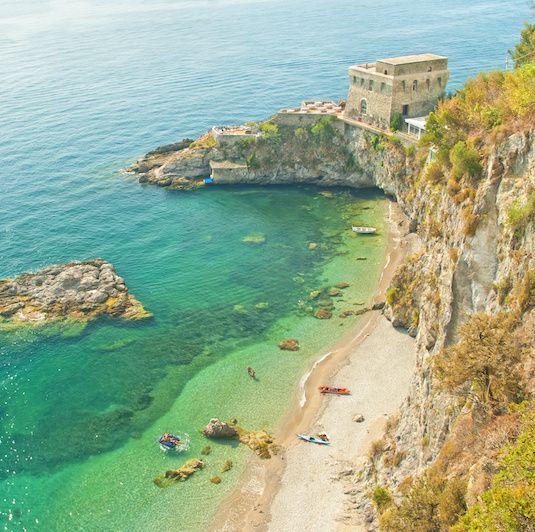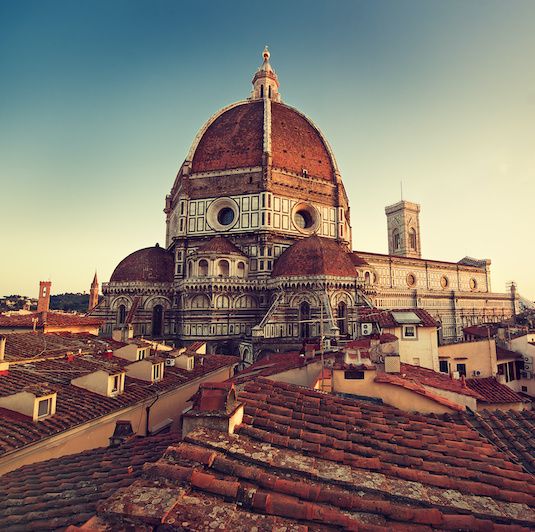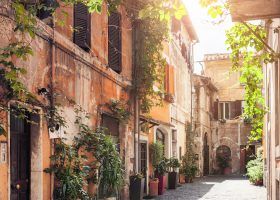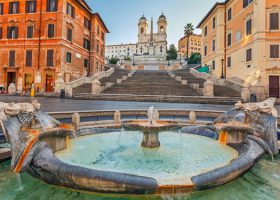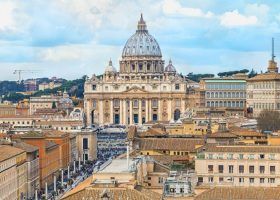Among all the amazing art that the Vatican Museums have to offer, the Vatican Gallery of Tapestries is surely one of the most astonishing. You’ll see the work of artist Raphael Sanzio brought to life by Belgian tapestry makers. In this guide, we cover what you need to know about the Vatican Gallery of Tapestries before you visit.
Pro Tip: Planning your visit to the Vatican in Rome? Bookmark this post in your browser so you can easily find it when you’re in the city. See our comprehensive guide to Vatican City for more planning resources, our top Vatican tours for a memorable trip, and how to visit the Vatican.
Vatican Gallery of Tapestries Guide
Located in the very heart of the Vatican Museums, the Gallery of Tapestries displays an enormous amount of tapestries, produced by the brilliant artist, Raphael Sanzio, and realized by Belgian tapestry makers.
As you prepare for your Vatican Museums visit, you might also want to check out our ultra-comprehensive list of what to see at the Vatican written by a licensed Vatican guide! In this guide, find out more about the gallery to fully appreciate it when you visit. Here’s what we’ll cover:
- What Are Tapestries?
- The Purpose of Tapestries
- Where To Find the Gallery of Tapestries
- What To See in the Gallery of Tapestries
- Raphael’s Work on the Tapestries
- Vatican Tours with Gallery of Tapestries
Not ready to book a tour? See if a Vatican tour is worth it.
What Are Tapestries?
As an official tour guide of the Vatican, I have to admit that many people scurry through this room as quickly as possible. Tapestries are not really something in vogue at the moment, so I get it. However, my hope is that after reading this article you’ll walk a bit slower through this room when you visit the Vatican Museums.
Simply put, a tapestry is a decorated carpet. While this may not seem like a flattering definition, let’s speak plainly. That said, many tapestries are, in fact, beautiful pieces of artwork. Tapestries became a popular form of artwork in the 14th century. However, there are examples of tapestries from much earlier in the Middle Ages.
The Purpose of Tapestries
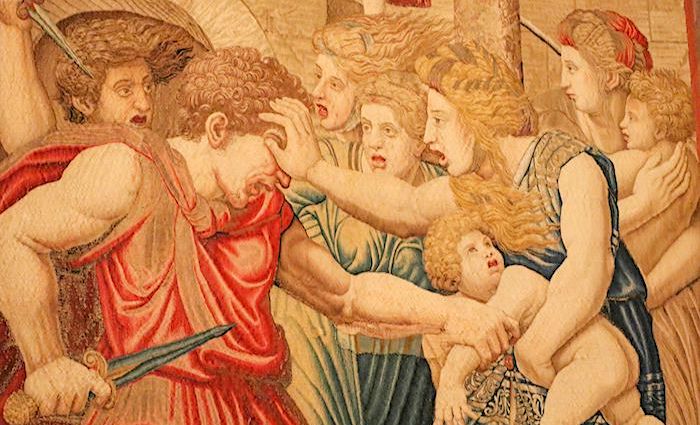
Tapestries are made of wool, silk, and silver and gold thread. By using these textile materials, the images take on a beautiful quality due to the shine from the metals and the fabrics used. The most obvious purpose of tapestries was their ornamental value. Tapestry makers were highly sought after and, on many occasions, would make more money than painters.
Besides their beautiful ornamental value, however, there was also a much more practical purpose. They were also used to warm up rooms. In the Early Middle Ages, these tapestries would have adorned the walls of drafty, old stone castles. By hanging this “rug” on the wall, it allowed the heat to be trapped in the fabric and therefore warmed up the room.
In our case in the Sistine Chapel, the tapestries absorbed the heat from the braziers that burned in the chapel. This is why when you enter the Vatican Museums today, it is one of the only rooms with air conditioning.
Popular Rome Tours
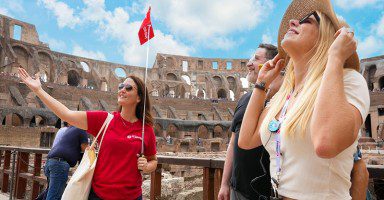
Best Selling Tour
Rome in a Day Tour with Colosseum and Vatican Museums
Seeing the best of Rome in a single day might seem like a big undertaking, but our expertly designed tour makes it effortless with skip-the-line tickets, included transportation, and engaging guides to lead the way. In just 7 hours, you’ll visit renowned sites like the Sistine Chapel, Colosseum, Trevi Fountain, and Pantheon. With fascinating stories at every stop, you can skip the stress and immerse yourself in the vibrant heritage and culture of Rome all in one remarkable day.
See Prices
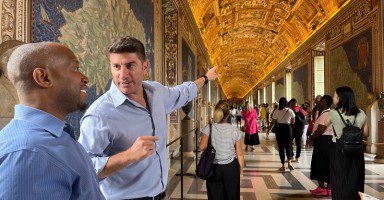
Best Price!
Privileged Entrance Vatican Tour with Sistine Chapel
Without the right access, visiting the Vatican means fighting crowds, long waits, and missing the most significant rooms and works of art. Our privileged entrance tour offers more than just entry—it’s an immersive experience led by a storytelling guide who brings the Vatican to life. Skip the line and explore the Vatican Museums, including the Raphael Rooms, the Sistine Chapel, and St. Peter’s Basilica with engaging insights that make each moment memorable and meaningful.
See Prices
Not ready to book a tour? Check out our best Vatican tours to take and why.
Where To Find the Gallery of Tapestries
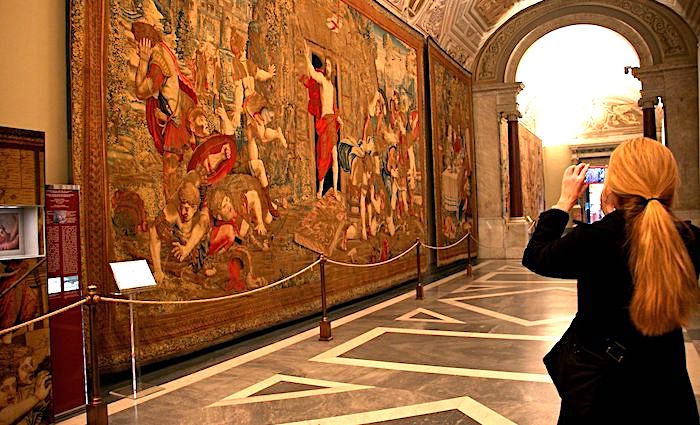
You can’t miss the Gallery of Tapestries when you visit the Vatican Museums. Literally—you have to pass through it to visit the Sistine Chapel. It’s sandwiched between the Gallery of the Candelabra and Gallery of Maps.
This impressive hallway is 245 feet long. It houses large tapestries on both walls down the entire hallway. On the left wall, there are tapestries designed by the hand of the painter Raphael and commissioned by Pope Clement VII (Pope 1523-1534). These designs were called cartoons, which were then sent up north to Belgium to master tapestry makers. These particular tapestries were designed by the Flemish artist Pieter van Aelst.
What To See in the Gallery of Tapestries
The Gallery of Tapestries possesses beautiful tapestries on both the right and left walls. On the right wall are tapestries commissioned by Pope Urban VIII (Pope from 1623-1644).
These tapestries are literally stories about his life as pope and, honestly, not as interesting as the ones on the left. So, we’ll stay focused on the left-wall tapestries. Before you leave the room, don’t forget to look up. There are a series of very impressive trompe l’oeil paintings executed on the vault back in 1789.
Slaughter of the Innocents
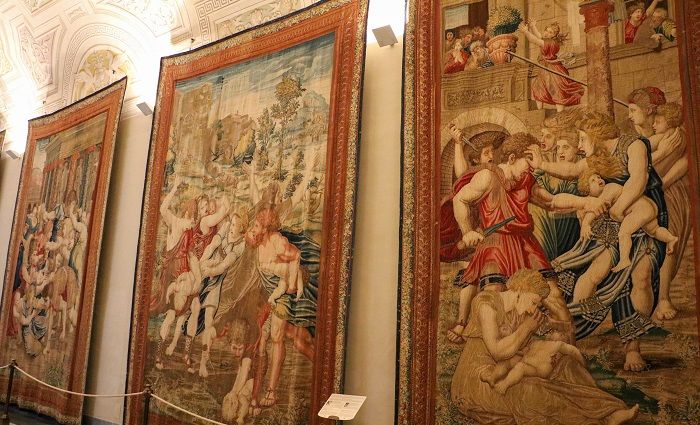
On the left wall, you’ll see tapestries depicting stories of the life of Jesus Christ. Personally, the most moving tapestry is the Slaughter of the Innocents.
This is a series of three tapestries that tell the story of how King Herod ordered all the male babies under the age of two to be killed. The idea is that he was looking for the new king who had been born—aka Jesus. It didn’t work and Jesus and his family escaped the slaughter.
Resurrection of Christ
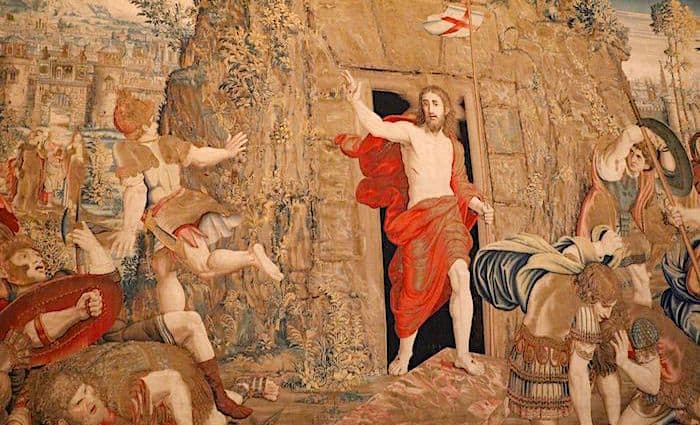
Another interesting tapestry is the Resurrection of Christ. This tapestry was originally hung in the Sistine Chapel in 1531 until it was moved to this gallery in 1838, according to the official Vatican State Archives.
It shows a triumphant Christ exiting from the cave where he was buried. He stands on the stone that previously sealed the cave and holds up his right hand with the three-finger sign of the holy trinity.
The Flemish designers decided to add a little something extra to the Resurrection of Christ. With the tapestry on your left, find Jesus’ eyes and slowly start to walk past the tapestry. His eyes will follow you from one side to the other. The message was simple: no matter where you are, Jesus is always watching you!
Raphael’s Work on the Tapestries
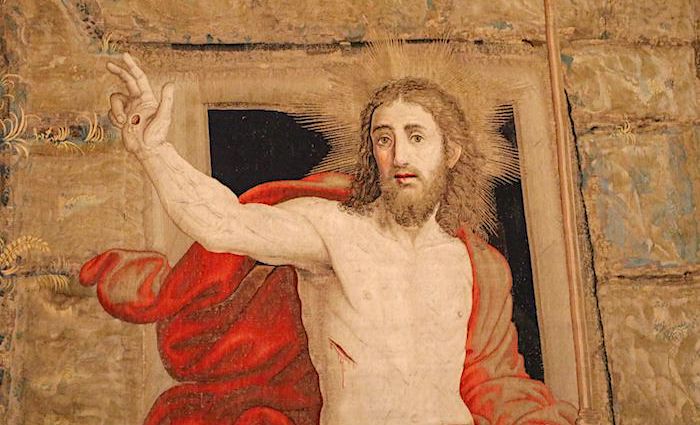
The tapestries on the left wall are also famous because their designs were created by the famous painter Raphael. Once he made the drawings, he sent them to Brussels for final preparation. Unfortunately, as even the historian and architect Giorgio Vasari claims, “Raphael met several initial difficulties while preparing his project.”
First of all, Raphael had to proceed from the bottom to the top to draw the cartoon when he would usually draw starting from the top. This is due to the fact that his designs would be reversed during the weaving process. In Belgium, they used low-warp looms, which produce a reverse image of the original design.
Secondly, the painter inevitably had to compare his work on the tapestries with the majestic one produced by Michelangelo for the Sistine Chapel. This is no easy feat, considering that the Sistine Chapel was one of the biggest masterpieces of all time. However, I feel that Raphael held his own.
He managed to use Michelangelo’s work as a source of inspiration and completed his work two years later, in 1516, as the Vatican payment registers confirm.
Vatican Tours with Gallery of Tapestries

Supposedly, if you stand in front of each art piece for one minute in the Vatican Museums, it would take you 12 years to see everything. How incredible is that! While it’s certainly possible to visit the museums on your own, I highly recommend you join a tour guide.
Not only will a tour guide get you skip-the-line access, they’ll also guide you through the Vatican Museums quickly. Your guide will get you in and out before you go into overload without missing anything important.
Best of all, you’ll hear all the intriguing stories and history that make this museum and its collections so fascinating. It’s an added layer that will make your Vatican visit all the more meaningful.
There are lots of Vatican tour options to suit your interests and schedule, compare our best Vatican tours. In all of our Vatican tours, you’ll witness the Gallery of Tapestries up close, so check them out and reserve your spot! See the video below for the top things to see at the Vatican—the Gallery of Tapestries is featured at number five and you’ll get a preview of this beautiful space.
Not ready to book a tour? Find out if a Vatican tour is worth it.
Here is Where to Stay in the Most Popular Destinations
Rome, Florence, Venice, and the Amalfi Coast and Capri

